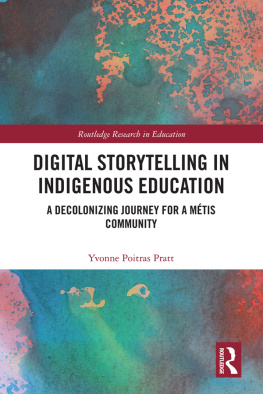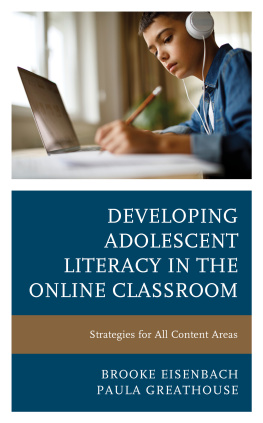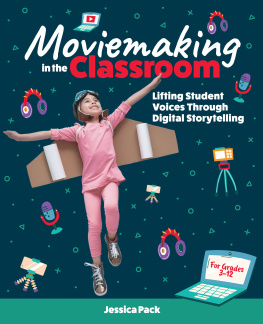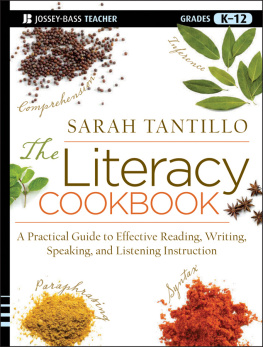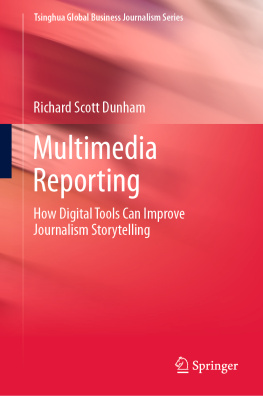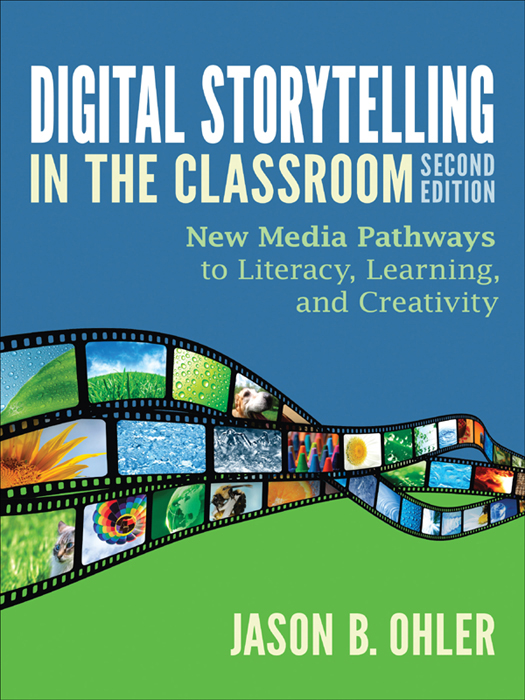To my wife, Terri. Life with her is a wonderful story indeed.

FOR INFORMATION:
Corwin
A SAGE Company
2455 Teller Road
Thousand Oaks, California 91320
(800) 233-9936
www.corwin.com
SAGE Publications Ltd.
1 Olivers Yard
55 City Road
London EC1Y 1SP
United Kingdom
SAGE Publications India Pvt. Ltd.
B 1/I 1 Mohan Cooperative Industrial Area
Mathura Road, New Delhi 110 044
India
SAGE Publications Asia-Pacific Pte. Ltd.
3 Church Street
#10-04 Samsung Hub
Singapore 049483

Acquisitions Editor: Arnis Burvikovs
Associate Editor: Desire A. Bartlett
Editorial Assistant: Mayan N. White
Production Editor: Cassandra Margaret Seibel
Copy Editor: Dan Gordon
Typesetter: C&M Digitals (P) Ltd.
Proofreader: Caryne Brown
Indexer: Teddy Diggs
Cover Designer: Gail Buschman
Permissions Editor: Jennifer Barron
Copyright 2013 by Corwin

All rights reserved. When forms and sample documents are included, their use is authorized only by educators, local school sites, and/or noncommercial or nonprofit entities that have purchased the book. Except for that usage, no part of this book may be reproduced or utilized in any form or by any means, electronic or mechanical, including photocopying, recording, or by any information storage and retrieval system, without permission in writing from the publisher.
All trade names and trademarks recited, referenced, or reflected herein are the property of their respective owners who retain all rights thereto.
Printed in the United States of America.
Library of Congress Cataloging-in-Publication Data
A catalog record of this book is available from the Library of Congress.
ISBN: 978-1-4522-6825-5
This book is printed on acid-free paper.
13 14 15 16 17 10 9 8 7 6 5 4 3 2 1

Contents
David D. Thornburg
 | Access videos and other resources related to Digital Storytelling in the Classroom at http://www.corwin.com/digitalstorytelling |

Foreword
F or decades Ive argued that, as the stories once told around a campfire are now being told with the glow of a computer monitor, we must ensure that the new forms of storytelling are as compelling as the old. Storytelling traditions go back many generations in West Africa to the Griots who, even today, share their compelling stories with just the power of their voice, and sometimes with a musical instrument to accompany them. The Griot understands that stories are more than entertainment; they are vehicles for learning. It is this connection that makes digital storytelling so compelling.
Jason Ohler understands that digital storytelling is storytelling first and digital second. It is easy to get caught up in flashy multimedia whose plethora of effects can swamp and even obscure the story being told. For this reason, the craft of digital storytelling must be taken seriously. As Jason says, What happens when you give a bad guitarist a bigger amplifier? The volume you hold is a guide to building digital story amplifiers where the impact of the new media is to enhance, not obscure, the narrative craft of storytelling.
Since this is a second edition of the original book, it is logical to ask, What has changed that makes a new edition valuable?
It is safe to say that the power of storytelling has not changed. What has changed can be broken into two categories: changes in education, and changes in technology.
As these words are being written, the United States is adapting to a new set of Common Core standards that apply to the things all learners should be able to do, no matter where they live. Standards have their challenges, and while the Common Core does not mandate the kind of pedagogical shifts some of us would like, neither does it block them. In this environment, storytelling is even more important as a tool to humanize teaching and learning and to make the learning even more relevant to the students. Jason argues compellingly for the idea that relevancy, engagement, and agency offer students additional motivation in ways that encourage authentic learningnot just rote memorization of material quickly forgotten when the test is over.
When students know they will be sharing their stories with others, they will be exploring material in more depth, and there is an increased likelihood that they will remember what they learned for a long time.
On the technology front, the assumption in both the first and the current edition of this book is that students have access to powerful computers and software with which they can craft their stories. But new technologies have entered the scenesmartphones and tablets, for exampleand these also need to be explored in the context of digital storytelling. Many schools are racing to put tablets in the hands of every child without, in my view, thinking about whether these tools are effective in an educational settingespecially one that is as constructionist as digital storytelling. This is, however, a rapidly changing field, and it is impossible to anticipate how these tools might be used in the future. This said, tablets can be used as distribution platforms for online digital stories, thus extending the reach of student work well outside the boundaries of the school. With the popularity of social networks like Facebook, a posting about an online story can generate readership far beyond the number of people who had access to books in the Renaissance. And, with this in mind, recall that the Renaissance was a period of great progress in the arts and sciences.
I believe we are in a new Renaissanceone where digital storytelling can get ideas spread across the globe at the speed of light.
As Marshall McLuhan once said, When you travel at the speed of light, you dont need a rearview mirror. You hold, in your hands, a guide to improving education at light speed.
Enjoy your journey.
David D. Thornburg, PhD
Recife, Brazil
February 2013

Preface
I have one word for anyone who wants to tell a storywhether its with computers, with pictures scratched in the sand, or solely with the language of the body and the sounds of the human voice; whether its the story of a quest to find ones holy grail, to find oneself, or simply to find a way to tell ones story; whether its a long story, a short story, or a story that never really ends; whether its told on the silver screen, in a circle of ones closest friends, upon the great virtual stage of the World Wide Web, or on a hill in full view of the gathered public; whether its a personal story, a universal story, someone elses story, or a story that can be understood only by the culture that tells it; whether its schoolwork, a work of art, art for work, or simply something that has to be said; whether its for you, for your friends, for your community, or for those you will never meet; whether its a personal journey, a scientific adventure, a fantasy of the mind, or a memory collage of ones ancestors; whether it exists as invisible bits of a digital file, as words on paper, as a TV rerun, or only as memories in the hearts and minds of elders; whether it never changes, changes every time it is told, or changes so slowly that no one notices. I have one word for anyone who wants to tell a story, and that word is welcome.


